On July 20, 1944, German Lieutenant Colonel Claus von Stauffenberg slipped a leather satchel underneath a briefing table at Adolph Hitler’s Wolf’s Lair headquarters near Rastenburg, East Prussia. Leaving the room on a prearranged pretext, von Stauffenberg departed the complex. The 2.2 pounds of plastic explosive packed into the satchel remained behind on a 10-minute fuse. Von Stauffenberg was a German aristocrat and military hero. Badly wounded in an Allied air attack in Tunisia in 1942, von Stauffenberg lost his left eye, two fingers on his left hand, and his right hand at the wrist. As a result of his wounds, von Stauffenberg was removed from active combat. After his convalescence, posted as a staff officer with the German Replacement Army in Berlin. Tradition holds that his sidearm was a Walther PPK, one of the few handguns that he could still safely operate despite his handicaps.
The bomb detonated underneath the heavy oak briefing table. One of its legs reportedly shielded Hitler from much of the ensuing blast. Four of those in attendance died while Hitler escaped with ruptured eardrums and superficial wounds. Subsequent events unfolded quickly and ferociously.
The Fallout of the Plot to Kill Hitler
The original plan had von Stauffenberg returning to Berlin to help organize a coup that would ultimately replace Hitler and pursue peace with the Allies. However, Hitler’s rapid personal intervention with the military units involved regained the initiative in short order. Generaloberst Friedrich Fromm, originally an active conspirator in the plot, attempted to save himself by ordering that von Stauffenberg and his compatriots be arrested. Surrounded in the Bendlerstrasse headquarters of the army, von Stauffenberg and his friends engaged in a brief shootout with their personal sidearms before being captured and disarmed. In the course of the engagement, von Stauffenberg was shot through the shoulder with a jacketed pistol bullet.
Advertisement — Continue Reading Below
Generaloberst Fromm had the plotters summarily executed later that evening but failed to insulate himself from his involvement. Fromm was later killed on orders from Hitler along with 4,979 other Germans, many of whom had no reliable connection to the plot. Under Gestapo head Heinrich Himmler’s Sippenhaft (literally “blood guilt”) laws, many of the conspirators’ families were arrested as well. While the plot failed to kill Hitler and end the war, Hitler, in his vengeful rage, murdered a large number of military officers and deprived the Wehrmacht of a great deal of otherwise effective leadership.
Pistol Philosophies
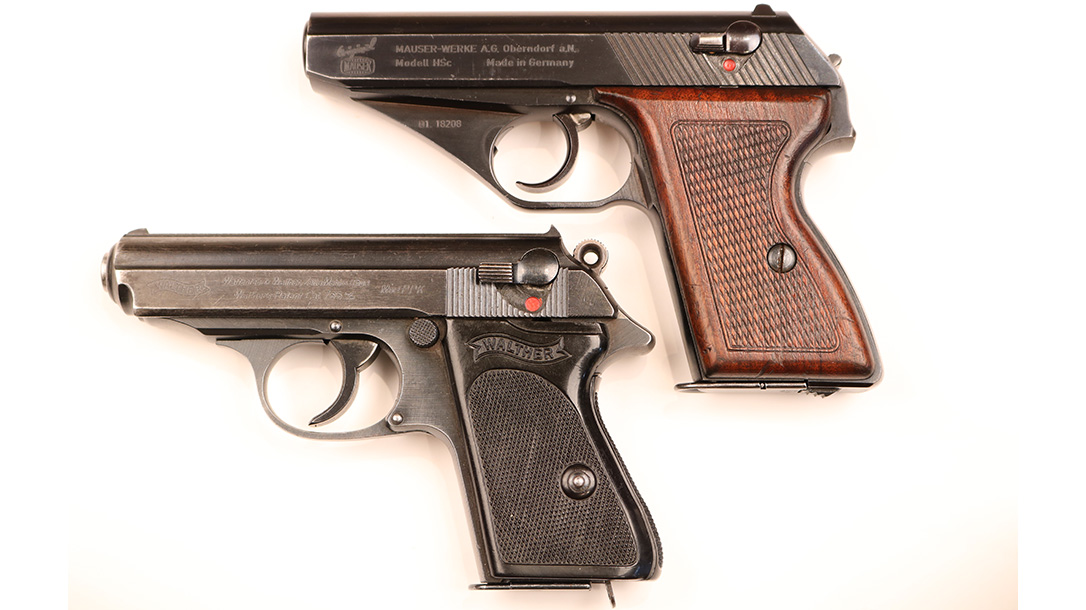
The Germans in World War II viewed the military sidearm somewhat differently than their American adversaries. The Colt Model 1911A1 service pistol that armed American soldiers was a mule of a combat handgun. Originally contrived by the visionary John Moses Browning to combat Moro insurgents in the Philippines in the early days of the 20th century, the M1911A1 weighed 2.44 pounds unloaded and launched projectiles nearly as wide as a man’s thumb. Heavy, bulky and powerful, the M1911A1 was an effective close-combat tool.
Advertisement — Continue Reading Below
By contrast, German officers were armed with a variety of handguns drawn from a variety of sources. The exigencies of WWII rapidly outstripped their production capacity, so the Germans built, borrowed, bought, and stole handguns from sources throughout their own country as well as their occupied territories. The result was a deplorable lack of standardization.
The iconic Luger P08 and the revolutionary Walther P38 were both full-sized handguns that launched Georg Luger’s timeless 9mm round. These capable sidearms were some of the most prized souvenirs available to American GIs back in the heady days when we trusted our returning heroes with such stuff. Many German officers, however, carried what we might call “pocket pistols” in today’s parlance. The pocket guns the Germans developed in WWII went on to shape the landscape for modern defensive pistols today.
Walther PPK
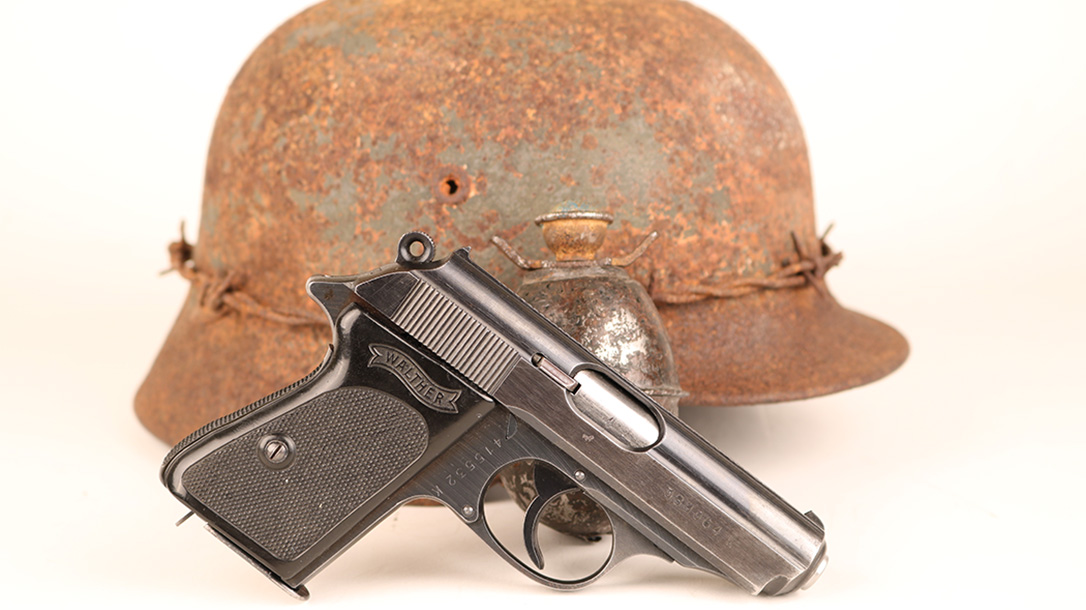
Advertisement — Continue Reading Below
Carl Walther released the PP (Polizeipistole) in 1929. Intended for police use, the PP incorporated several unique features that have since become commonplace. Produced in .22 LR, .25 ACP, .32 ACP, .380 ACP and 9x18mm Ultra, PP series pistols operated via simple unlocked blowback. The tidy little gun included an automatic hammer block safety, a combination safety/decocker and a loaded-chamber indicator. The most revolutionary aspect of the weapon, however, was its double-action/
single-action (DA/SA) trigger.
Adapted from the DA revolvers of the day, the DA/SA trigger on the PP allowed the gun to be carried safely with a round in the chamber and the hammer in the relaxed position. In such a state, the first round is fired via a long, heavy DA trigger pull. Subsequent rounds require a much lighter, shorter SA trigger pull that better lends itself to precision.
More PPK Details
The magazine release is a push button located on the left side behind the pistol grip. The rotating safety/decocker is mounted on the left aspect of the slide. The slide locks back after the last round is fired. Absent a manual slide release, the shooter simply replaces the magazine, draws the slide slightly to the rear and releases the assembly to recharge the gun. The sights are tiny and about useless—just like everybody’s sights back then. Finally, the ring-style hammer is knurled.
Advertisement — Continue Reading Below
Walther released a shorter version of the PP called the PPK (Polizeipistole Kriminalmodell) in 1931 intended for undercover detective use. This became the definitive variant. Weighing a mere 21 ounces and remaining small enough to hide in the palm of your hand, the PPK went on to arm Ian Fleming’s fictional MI-6 agent James Bond, and subsequently earn a worldwide following. Walther still produces the gun today. By pressing the forward aspect of the slide against the angle of a tabletop, von Stauffenberg could charge his PPK one-handed.
Mauser HSc
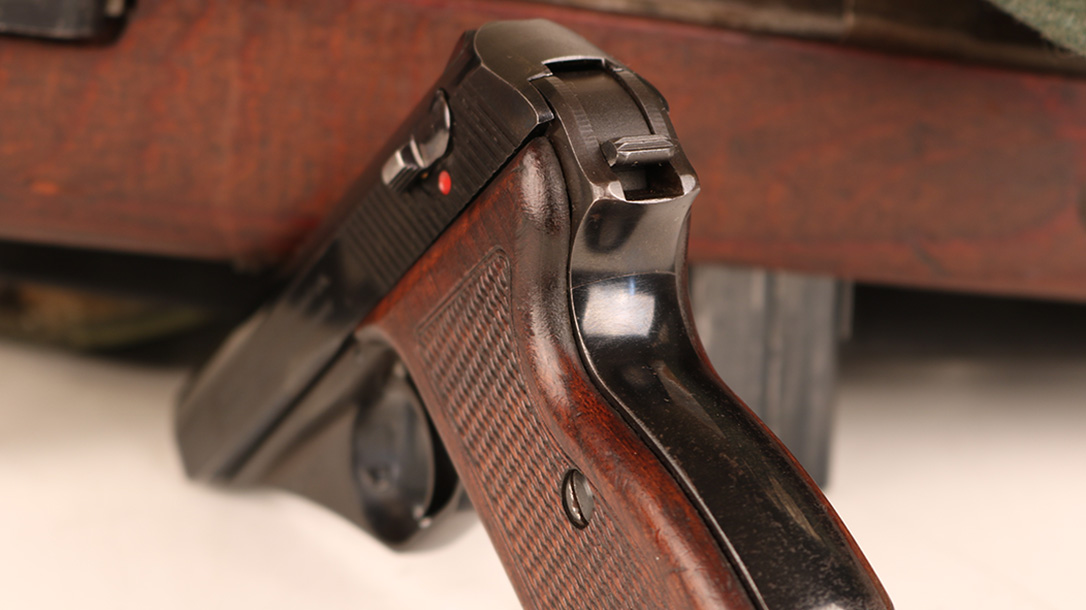
Mauser’s counterpart to the Walther PPK was the HSc (Hahn Selbstspanner, or “self-cocking hammer”). Like the PPK, the HSc operated via unlocked blowback. Designed by Alex Seidel in 1935 and initially produced in 1940, the HSc was originally marketed for commercial use. However, the necessities of total war meant that the German Kriegsmarine, Wehrmacht, Luftwaffe, and Waffen SS purchased the HSc in large quantities.
Advertisement — Continue Reading Below
After the war, the Mauser plant fell within the French zone of occupation. The French oversaw production of the gun through 1945 and 1946. Most of these weapons were shipped to Indochina for use by French forces fighting the insurgency there. Mauser recommenced commercial production of the HSc from 1968 to 1977. The majority ended up on the American commercial market. Sporting rakish lines and some combat features not equaled even today, the HSc was decades ahead of its time.
Masterful Mauser
The drum-shaped hammer is nestled within the back of the frame so that only the tiniest lip of steel remains exposed. However, this component remains easily accessible while unobtrusive. The safety on the HSc is a familiar rotating lever on the left aspect of the slide, but it does not decock the gun automatically. To “safe” the weapon, one applies the safety and then pulls the trigger while riding the hammer forward with the thumb. Should the need arise, the HSc can even be carried in “Condition One” with the safety on and the hammer back.
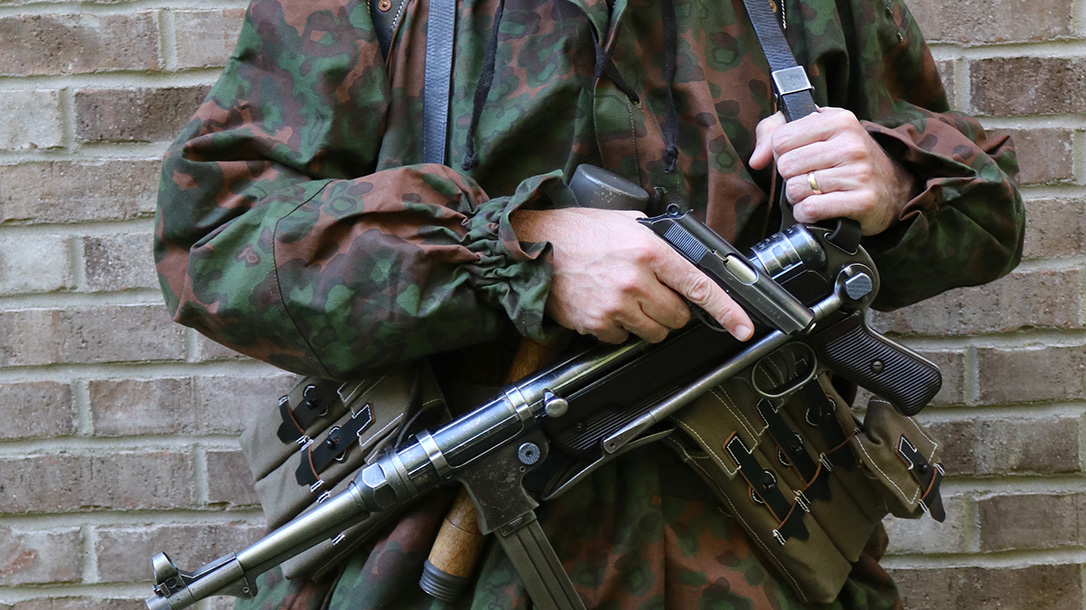
Advertisement — Continue Reading Below
The magazine release is heel mounted, as was frequently the case with European handguns. Like the PPK, the slide on the HSc locks to the rear after the last round is fired. There is no manual slide release. Unlike the PPK, removing or reinserting the magazine, empty or full, automatically drops the slide. When the gun runs dry, you simply remove the empty magazine and replace it with a fresh one. The slide runs forward automatically. Even on modern designs, nothing is faster.
Old Vs. New
Aside from the extra weight of their steel frames, the wartime PPK and HSc pistols remain competitive defensive handguns even today. The DA triggers are atrocious, but so are those of most modern DA defensive pistols. Striker-fired guns like the Glock 43 perfuse the modern marketplace, but the argument can be made that the old PPK trigger is safer—particularly for a pocket pistol.
Many modern defensive guns employ some miniaturized variation of John Browning’s link-less recoil-operated action. This design does indeed result in a thinner pistol, with less felt recoil than an unlocked blowback design. However, most pocket pistols run fairly anemic cartridges that don’t really require a lot of mechanical complexity for reliable operation.
Advertisement — Continue Reading Below
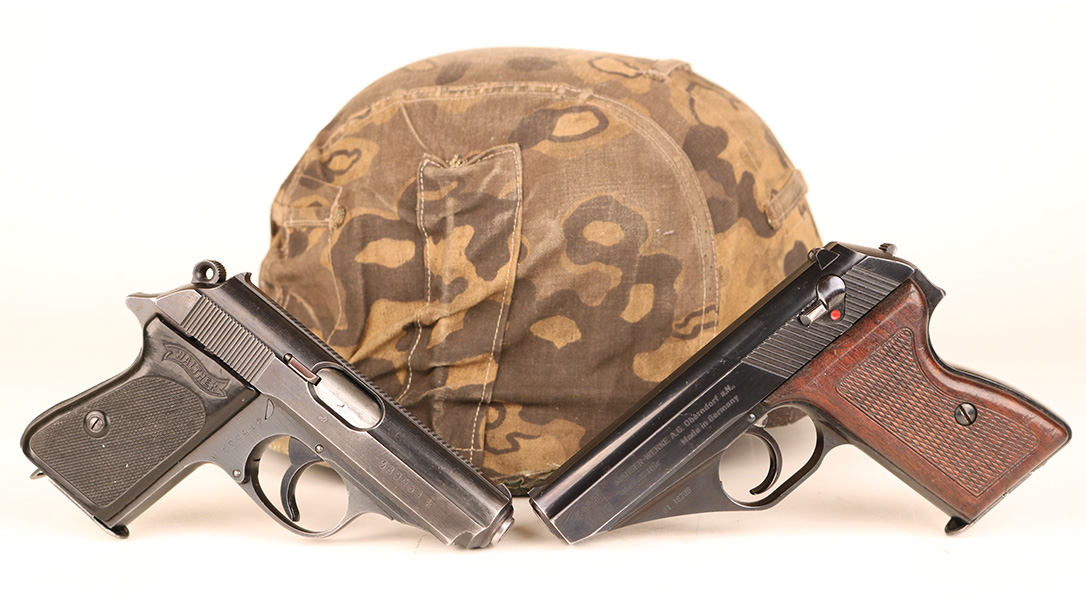
More Comparisons
On the range, I can shoot as well with my old Mauser HSc as I can with my modern Smith & Wesson Bodyguard, both chambered for the same .380 ACP round. In fact, the DA/SA trigger on the HSc is markedly nicer. Call me a heretic, but considering that a pocket pistol will only be employed at bad-breath ranges, things like the trigger pull, innate mechanical accuracy and even the sights (or lack thereof) don’t make a big difference. A pocket gun needs to be safe, snag-free and mechanically dependable while pointing naturally. The PPK and HSc do all of those things reliably and well.
Advertisement — Continue Reading Below
The .32 ACP cartridge that most German wartime pocket guns fired is anemic by modern standards. Particularly launching FMJ rounds, the stopping power of this little bullet is questionable at best. In the aforementioned vignette, von Stauffenberg was shot through the shoulder yet remained healthy enough to survive for several hours without medical attention until he was ultimately executed by firing squad on the grounds of the German army headquarters building early the following morning.
Where American combat handguns were powerful enough for use in life-or-death close-combat situations, German pocket pistols were frequently a badge of rank or a tool for either execution or suicide. Adolph Hitler used his personalized .32 ACP Walther PPK to take his own wretched life on April 30, 1945. In such applications, the lack of energy intrinsic to the .32 ACP is not such a detriment.
Making History
The Nazis were notorious villains, and even today, they still make the best bad guys in print or film. It is not by random chance that Darth Vader and his Stormtroopers terrorize the “Star Wars” universe cloaked in thinly veiled Nazi iconography. Despite their obvious moral corruption, the Nazis drove some of the most innovative military developments in history.
Revolutionary features introduced in the Walther PPK and the Mauser HSc perfuse our contemporary defensive guns. Trigger designs, safety features, and morphological characteristics that had their genesis in the 1930s can be found on the shelves of modern American gun stores rendered in stainless steel and Information Age polymer. Despite their wickedness, the Germans actually indirectly designed many of the guns we frequently pack for personal protection today.
Walther PPK Specs
- Caliber: .32 ACP
- Barrel: 3.3 inches
- OA Length: 6.1 inches
- Weight: 21 ounces (empty)
- Grips: Plastic
- Sights: Fixed
- Action: DA/SA
- Finish: Blued
- Capacity: 7+1
Mauser HSc Specs
- Caliber: .32 ACP
- Barrel: 3.4 inches
- OA Length: 6 inches
- Weight: 25 ounces (empty)
- Grips: Wood
- Sights: Fixed
- Action: DA/SA
- Finish: Blued
- Capacity: 8+1























